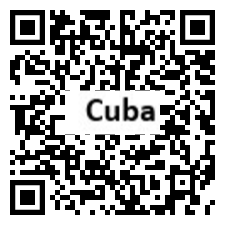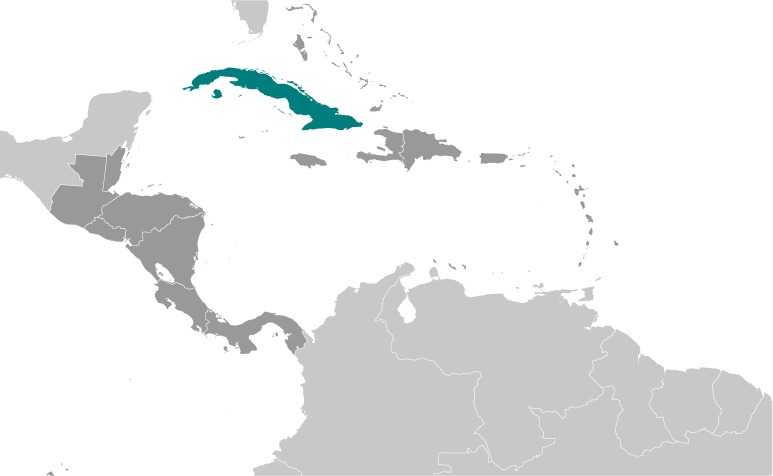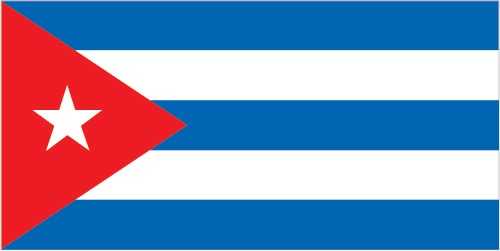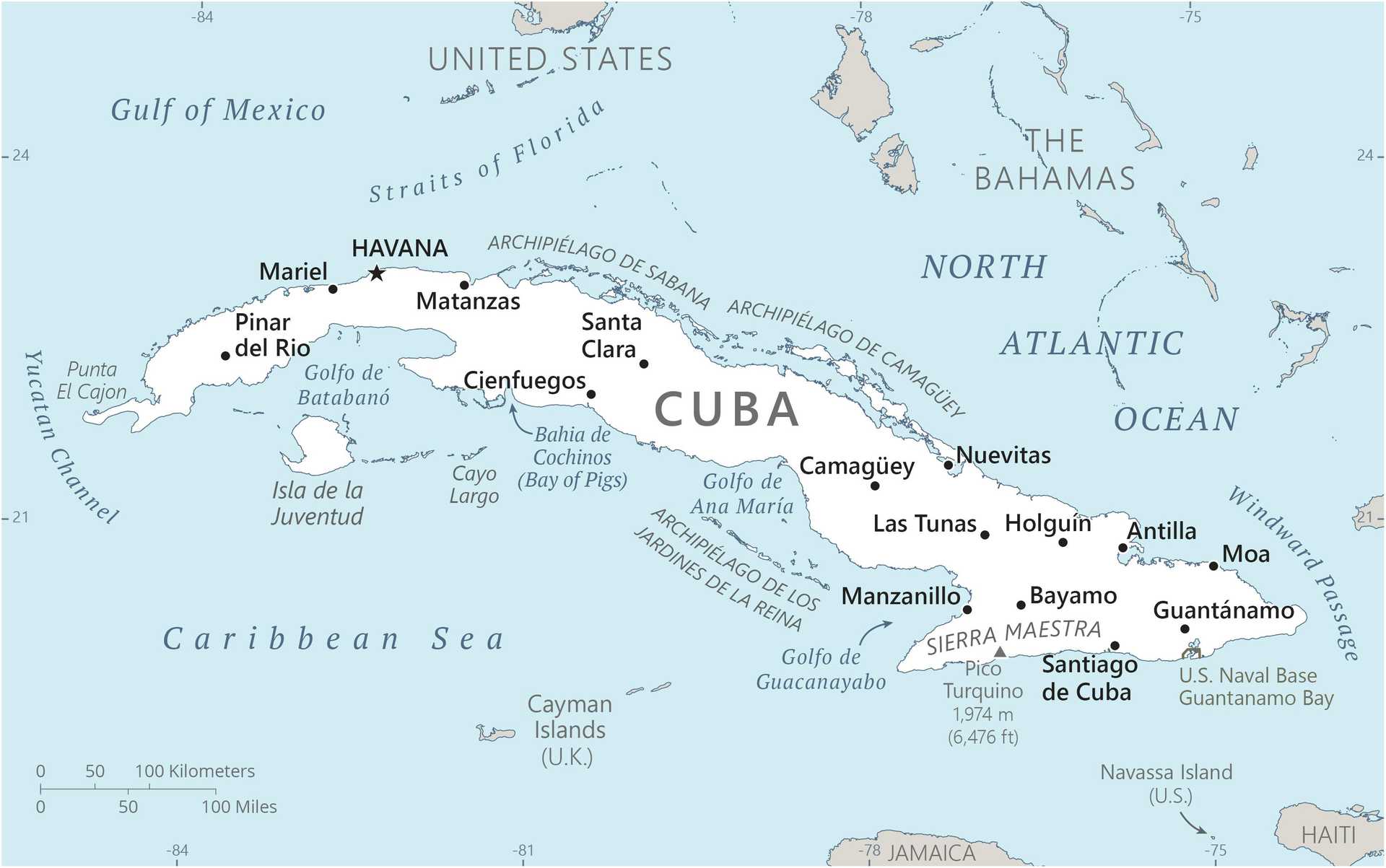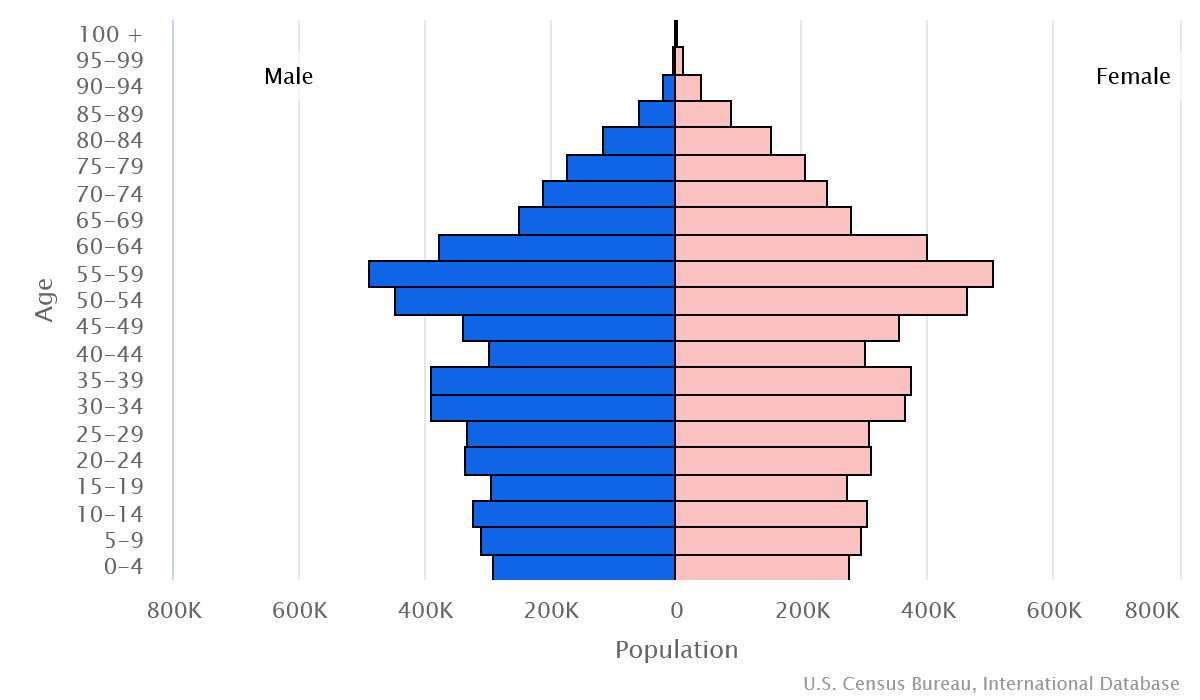Introduction
Background
The native Amerindian population of Cuba began to decline after the arrival of Christopher COLUMBUS in 1492, as the country was developed as a Spanish colony during the next several centuries. Fidel CASTRO led a rebel army to victory in 1959, and an authoritarian regime continues to rule the country.
Geography
Area
total : 110,860 sq km
land: 109,820 sq km
water: 1,040 sq km
Climate
tropical; moderated by trade winds; dry season (November to April); rainy season (May to October)
Natural resources
cobalt, nickel, iron ore, chromium, copper, salt, timber, silica, petroleum, arable land
People and Society
Population
total: 10,966,038
Ethnic groups
White 64.1%, Mulatto or mixed 26.6%, Black 9.3% (2012 est.)
Languages
Spanish (official)
Religions
Christian 58.9%, folk religion 17.6%, Buddhist <1%, Hindu <1%, Jewish <1%, Muslim <1%, other <1%, none 23.2% (2020 est.)
Population growth rate
-0.17% (2024 est.)
Government
Government type
communist state
Capital
name: Havana
Executive branch
chief of state: President Miguel DIAZ-CANEL Bermudez (since 19 April 2018)
head of government: Prime Minister Manuel MARRERO Cruz (since 21 December 2019)
Legislative branch
description: unicameral National Assembly of People's Power or Asamblea Nacional del Poder Popular (474 seats; (470 seats filled in 2023); members directly elected by absolute majority vote; members serve 5-year terms); note 1 - the National Candidature Commission submits a slate of approved candidates; to be elected, candidates must receive more than 50% of valid votes otherwise the seat remains vacant or the Council of State can declare another election
Economy
Economic overview
still largely state-run planned economy, although privatization increasing under new constitution; widespread protests due to lack of basic necessities and electricity; massive foreign investment increases recently; known tobacco exporter; unique oil-for-doctors relationship with Venezuela; widespread corruption
Real GDP (purchasing power parity)
$137 billion (2017 est.)
$134.8 billion (2016 est.)
$134.2 billion (2015 est.)
Real GDP per capita
$12,300 (2016 est.)
$12,200 (2015 est.)
$12,100 (2014 est.)
Agricultural products
sugarcane, cassava, plantains, vegetables, mangoes/guavas, milk, pumpkins/squash, tomatoes, sweet potatoes, bananas (2022)
Industries
petroleum, nickel, cobalt, pharmaceuticals, tobacco, construction, steel, cement, agricultural machinery, sugar
Exports
$8.769 billion (2020 est.)
$12.632 billion (2019 est.)
$14.53 billion (2018 est.)
Exports - partners
China 40%, Spain 13%, Germany 5%, Portugal 4%, Switzerland 4% (2022)
Exports - commodities
tobacco, nickel, zinc ore, liquor, raw sugar (2022)
Imports
$8.067 billion (2020 est.)
$10.971 billion (2019 est.)
$12.567 billion (2018 est.)
Imports - partners
Spain 23%, China 12%, US 10%, Brazil 8%, Netherlands 6% (2022)
Imports - commodities
poultry, wheat, milk, plastic products, soybean oil (2022)
Exchange rates
Cuban pesos (CUP) per US dollar -
Page last updated: Wednesday, July 24, 2024
